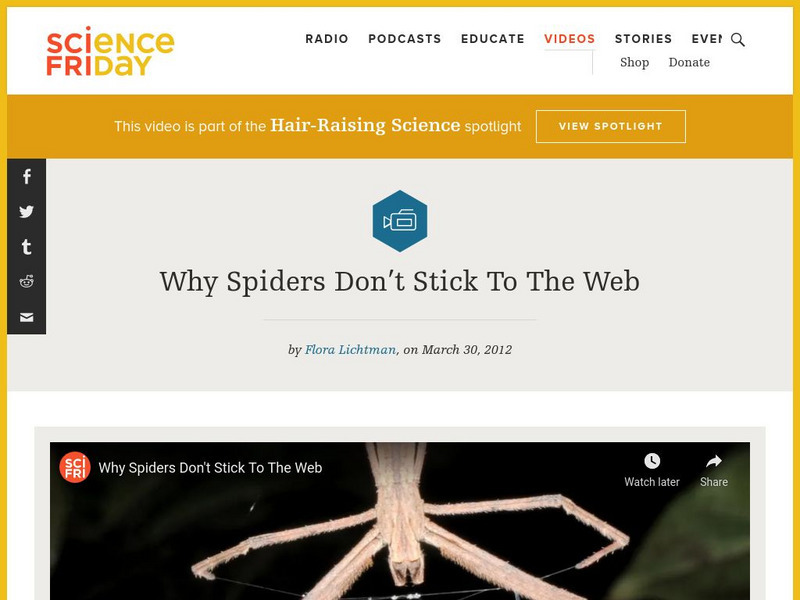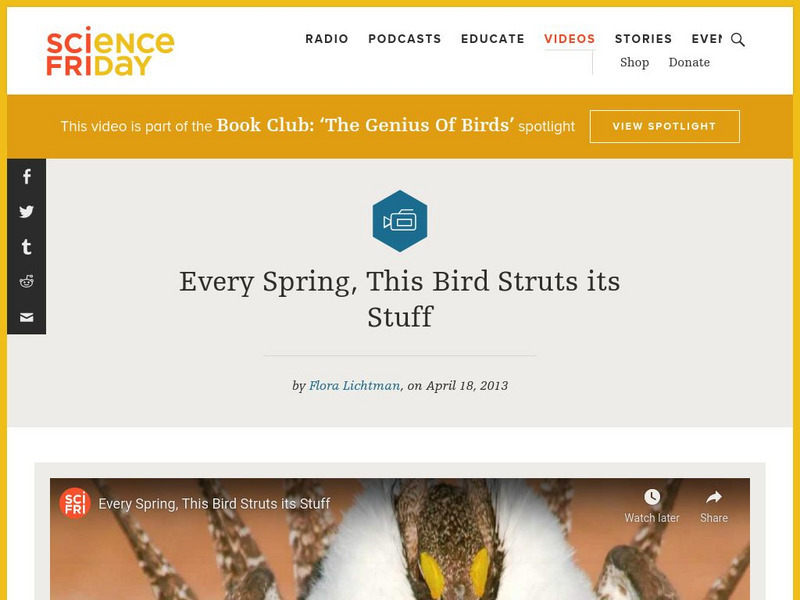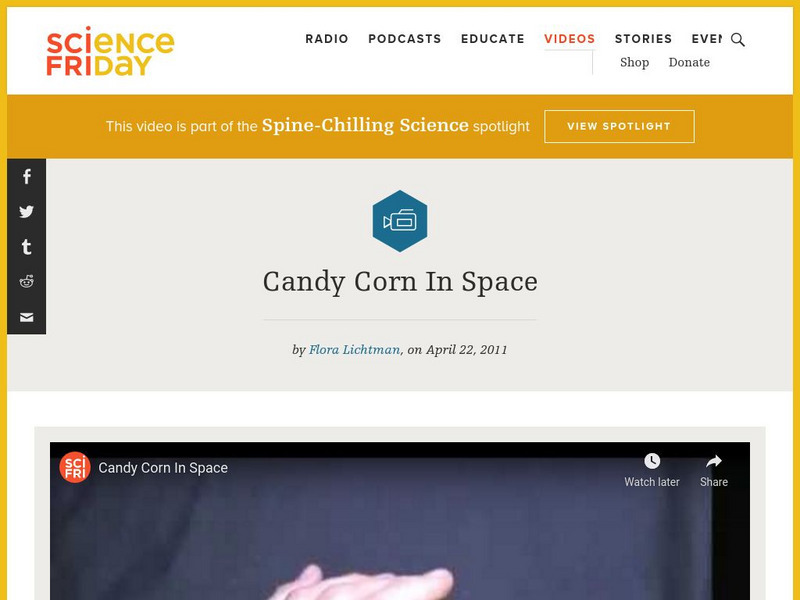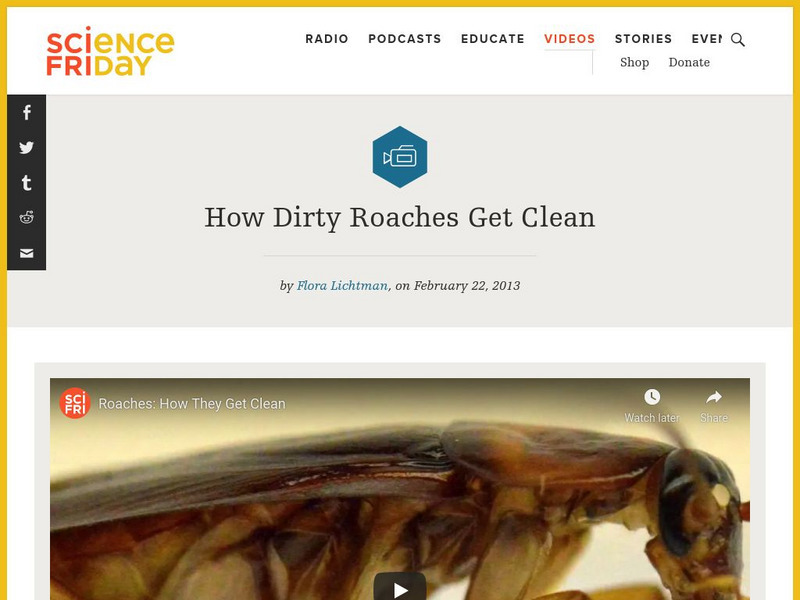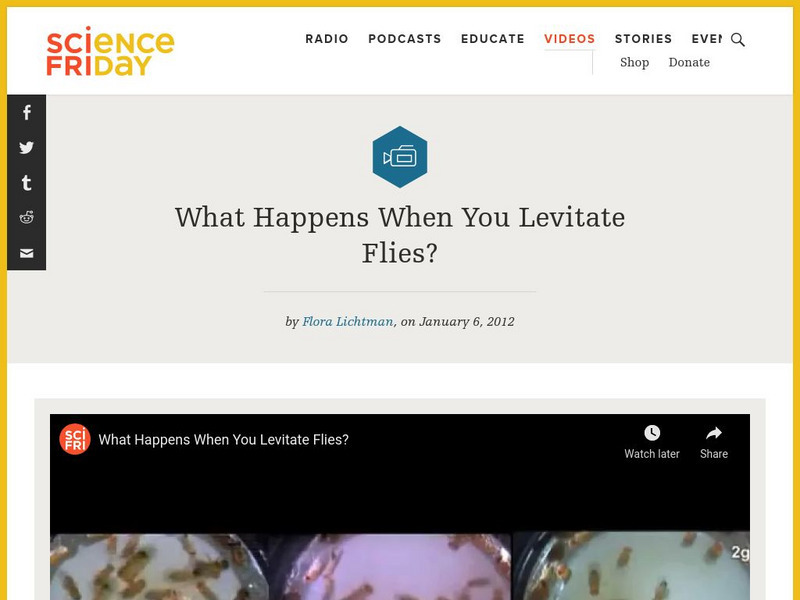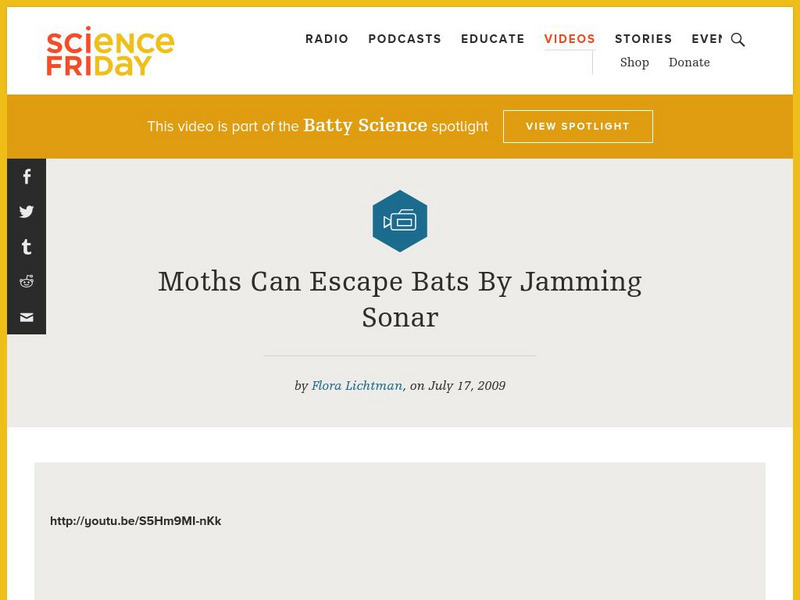Hi, what do you want to do?
Science Friday Initiative
Science Friday: Cracking the Egg Sprinkler Mystery
When engineer Tadd Truscott was in grad school, one of his classmates at MIT suggested they spin an egg in a puddle of milk and film it with a high-speed camera. What they saw was a tiny sprinkler system: the milk rose up the sides of...
Science Friday Initiative
Science Friday: Why Spiders Don't Stick to the Web
William Eberhard, of the Smithsonian Tropical Research Institute and the University of Costa Rica, and colleague Daniel Briceno film spiders in the lab, in the field and under a dissecting microscope to untangle this longstanding...
Science Friday Initiative
Science Friday: Desktop Diaries: Daniel Kahneman
"I have always emphasized the willingness to discard," says psychologist and Nobel Laureate Daniel Kahneman. That philosophy works on two levels -- forget desk trinkets, Kahneman doesn't have a desk -- and he doesn't hoard ideas either...
Science Friday Initiative
Science Friday: Desktop Diaries: Temple Grandin
"I'm pure geek, pure logic," says Temple Grandin, a professor of animal science at Colorado State University. We spent an afternoon with Dr. Grandin in her office in Fort Collins.
Science Friday Initiative
Science Friday: Teacher Feature: Ethnobotanist Tom Carlson
Professor Tom Carlson, a medical doctor, ethnobotanist, and instructor of 1700 students annually at the University of California, speaks of his favorite time of the week, office hours. [3:02]
Science Friday Initiative
Science Friday: Dark Art
A biologist takes shadow puppetry to the next level.
Science Friday Initiative
Science Friday: How Owls Turn Heads
Scientists describe what they have learned about owls, and how they manage to turn their heads almost completely full circle without harming their blood vessels. Aired Feb. 1, 2013. [3:48]
Science Friday Initiative
Science Friday: Every Spring, This Bird Struts Its Stuff
The Greater sage-grouse makes its living in sagebrush habitats across the western U.S. and Canada. Every year from late February to May, male sage-grouse perform a striking dance routine each morning at dawn. Jason Robinson, upland game...
Science Friday Initiative
Science Friday: Fishy Crowdsourcing
Andrew Berdahl, graduate student at Princeton University, explains that Golden shiner minnows prefer shady habitat. And he and his co-authors found that large groups of fish are better at tracking shady habitats than smaller groups or...
Science Friday Initiative
Science Friday: Desktop Diaries: Jill Tarter
As the SETI (Search for Extraterrestrial Intelligence) Institute's first employee, Tarter has accumulated E.T.-themed office ornaments for the last 30 years -- including a bottle of wine to be opened "only upon detection of...
Science Friday Initiative
Science Friday: Candy Corn in Space
Astronauts are allowed to bring special "crew preference" items when they go up in space. NASA astronaut Don Pettit chose candy corn for his five and a half month stint aboard the International Space Station. But these candy corn were...
Science Friday Initiative
Science Friday: Plunge Into the Science of Base Jumping
BASE stands for the objects the practitioners of the sport jump from: buildings, antennas, spans, earth. We look into the physics and neuroscience of the sport.
Science Friday Initiative
Science Friday: To the Bat Cave!
Bat biologist Nickolay Hristov develops new techniques for filming and visualizing bats and the caves they occupy.
Science Friday Initiative
Science Friday: High Schoolers Give Hot Dog a Dna Test
Two high school students talk about their experiment using DNA barcoding to identify the ingredients in over 200 animal products, including many popular foods. They found some cases of misrepresentation. Aired Jan. 22, 2010. [3:33]
Science Friday Initiative
Science Friday: How Dirty Roaches Get Clean
Although people think of cockroaches as disgusting creatures, they are in fact very good at keeping themselves clean, with their antennae getting the most attention. Unfortunately, they ingest everything they clean off of their bodies,...
Science Friday Initiative
Science Friday: Heavy Metal: The Physics of Diy Instruments
Paul Rudolph finds objects in garbage and junkyards, and transforms them into musical instruments, even using them in his own performances with his band. Listen as he talks about this work, and as a scientist discusses the physics of...
Science Friday Initiative
Science Friday: What Happens When You Levitate Flies?
Everything is a little bit magnetic, says physicist Richard Hill, of The University of Nottingham. So with a powerful magnet, it is possible to levitate almost anything--strawberries, water, insects. In a recent study, Hill levitated...
Science Friday Initiative
Science Friday: Pied Piper of Fish
Maurizio Porfiri wants to build robots that can herd fish like sheepdogs. Sound fishy? He's farther along than you might expect. A few years ago, Porfiri, a mechanical engineer at the Polytechnic Institute of New York University,...
Science Friday Initiative
Science Friday: Moths Can Escape Bats by Jamming Sonar
For over 50 million years, bats and moths have been engaged in an evolutionary arms race: bats evolving new tricks to catch moths, and moths developing counter-measures to escape bats. William Conner, a biologist at Wake Forest...
Science Friday Initiative
Science Friday: This Beetle Puts the 'Extreme' in Extremity
For the Japanese horned beetle (Trypoxylus dichotomous), size matters. Its horn, which can be two-thirds the length of the rest of its body, is its key to mating success.
Science Friday Initiative
Science Friday: Finding Glow in the Dark Millipedes
Forget fireflies, some millipedes glow in the dark too. We found out about the phenomenon from SciFri listener Chris Lavin, who stumbled upon fluorescing blue millipedes during an evening stroll near her home in Canyon, Calif. [3:57]
Science Friday Initiative
Science Friday: Desktop Diaries: Tim White
From snake skins to bear teeth, White's office is not short on artifacts.
Science Friday Initiative
Science Friday: The Inner Beauty of Naked Mole Rats
How do naked mole rats live to 30 years without getting cancer? Research by Vera Gorbunova and Andrei Seluanov of the University of Rochester show how these aesthetically challenged creatures live long, cancer-free lives.
Science Friday Initiative
Science Friday: Desktop Diaries: Sylvia Earle
How do you become a scientist? "It's really easy: you start out as a little kid and then you never grow up," says explorer and biologist Sylvia Earle. Step into her office.






